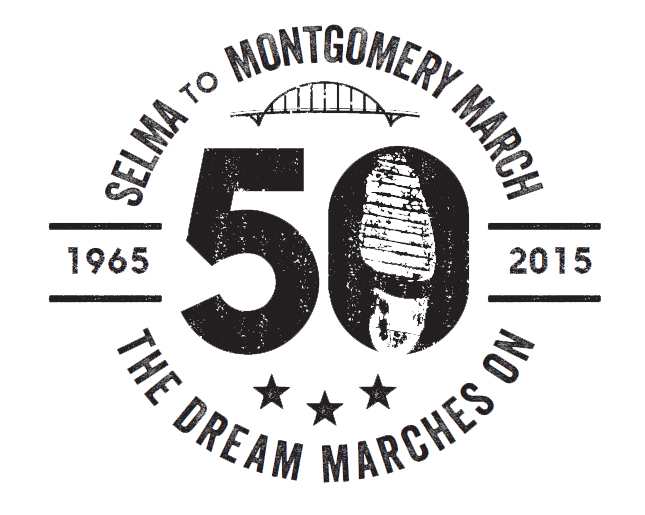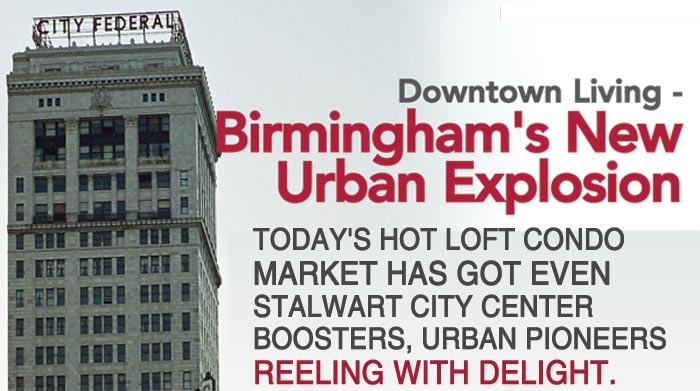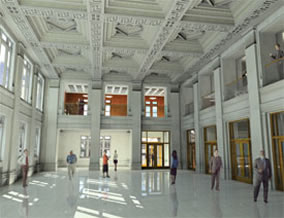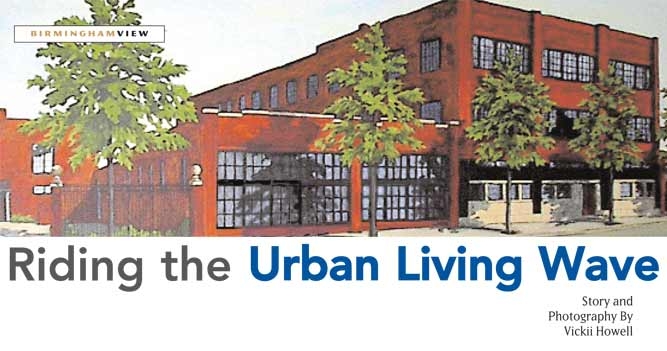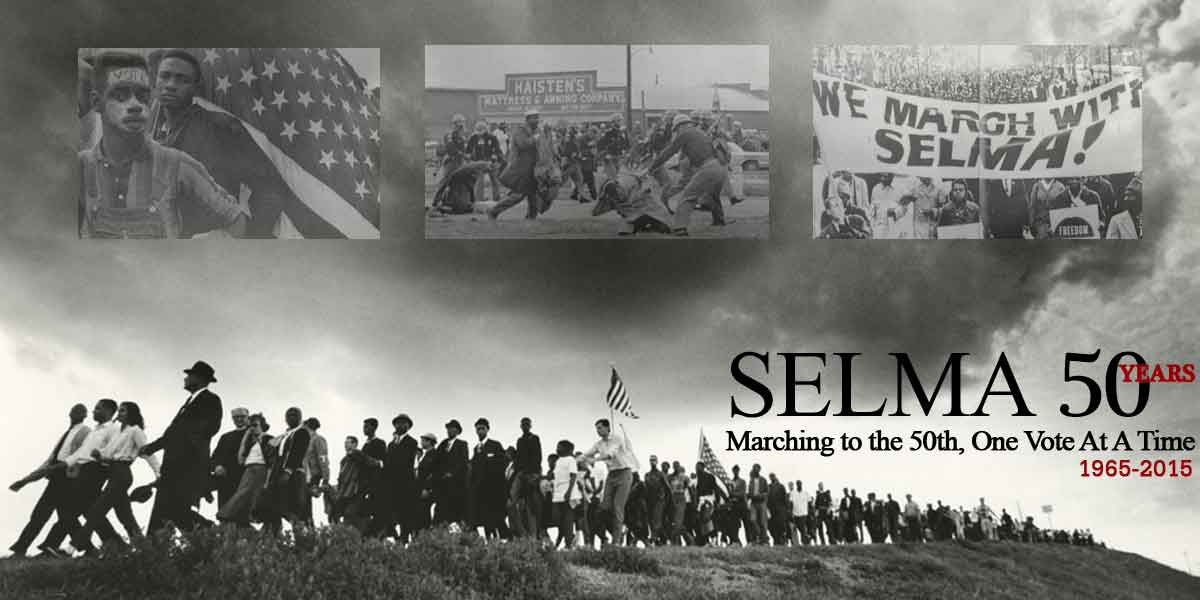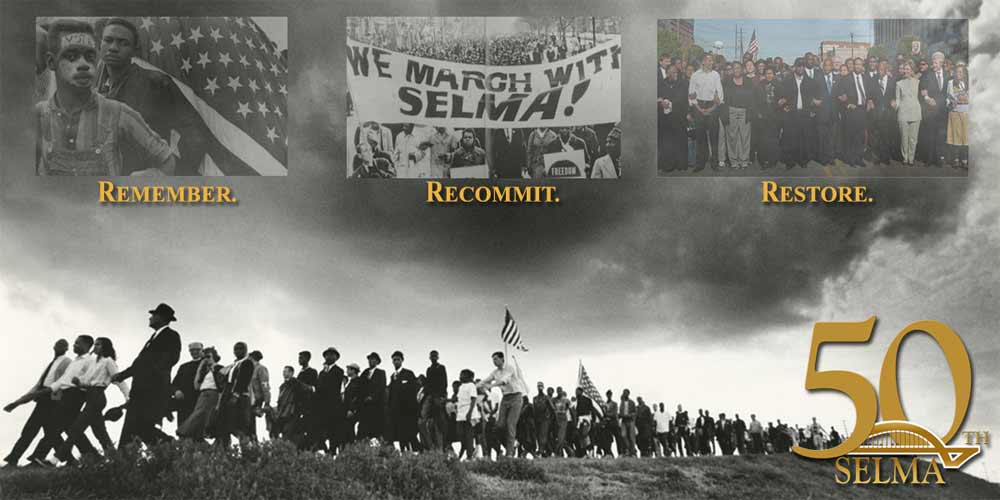| STORY and PHOTOGRAPHY BY VICKII HOWELL |
WHAT DO ADAM COHEN, DAMIAN GILBERT, AND LEIGH FERGUSON HAVE IN COMMON? THEY ARE STALWART CITY CENTER PROMOTERS AND URBAN PIONEERS WHO BELIEVE DOWNTOWN BIRMINGHAM WOULD COME BACK TO LIFE NEVER WAVERED IN THEIR FAITH.
They all saw it coming, and they positioned themselves to take advantage of it. That is, the wave of loft condo mania sweeping over Downtown Birmingham. Their words seem almost prophetic now, a year after Birmingham View first spoke to developers and urban trend watchers about what was happening Downtown.
“Actually Birmingham is a little bit behind the curve. Our company develops more lofts outside the City of Birmingham,” Cohen said then of his developments in Chattanooga, Knoxville, TN, and Columbia, SC. There, they could charge much higher rental and sales prices.
“But Birmingham will get there and get there quickly,” Cohen predicted. “With the proposed new construction products coming to Birmingham, I truly think you’re going to see $180-190 per square foot in new construction projects coming on line, and they will sell.”
These days, many loft condos are easily selling for $200 per square foot and higher, but who’s counting?
The developers, the bankers, and the urban dwellers who love them, that’s who.
Last year, Cohen’s company began building Johnston Lofts; today they are complete and full of owners who paid from $95,000 to $195,000 to get in. Now Cohen has $4.5 million plans to turn the windowless Athens Building on Second Avenue North and 23rd Street into condos with balconies and glass on the front. Sales prices range from $154,000 to $355,000.
In 2003, mortgage banker Damian Gilbert saw the urban living trend and moved his Wells Fargo office to a space in Fix Play on First Avenue North, in the heart of the loft district. His mission: to make his group the mortgage company of choice for Downtown loft condo buyers.
“I knew that young people had this whole Seinfeld and Friends complex where they wanted to live downtown. Because Wells Fargo was doing this in other markets across the country, we had a heads up . . . we knew this would soon be a growing trend in Birmingham.”
Now, hardly a month goes by without breathless announcements of developers’ plans to turn yet another towering, vacant, and moldy Downtown hulk into loft condominiums. Some developers are so bold as to build condos from the ground up.
As soon as the projects are announced, phones of developers and their real estate agents ring off the hook with empty-nesters or young professionals who can hardly wait to get Downtown. Or, with investors looking to make money selling their reservations or their units to someone eager to pay more to own a piece of Downtown.
No less than 27 loft developments – both condominiums and apartments of various sizes – are under construction, on the drawing table or in discussions in Downtown Birmingham.
Consider it official. Birmingham’s City Center has finally come down with Loft Condo Fever, the sure indicator that the urban living trend sweeping across the country has finally hit the Magic City full force.
<hrdata-mce-alt=”Predictions Come True” class=”system-pagebreak” />
|
|
|
|
Predictions Come True
Michael Calvert, president of Operation New Birmingham (ONB) which promotes revitalization in the City Center, said no one should really be surprised by the popularity of loft condos and apartments. Experts had already predicted Birmingham would follow the trend.
The Urban Land Institute study in 2003, last year’s City Center Master Plan update by Urban Design Associates of Pittsburgh, and the Zimmerman/Volk Associates study done as a part of that plan, all researched the demand for urban living Downtown.
At ONB’s 2003 one-day seminar touting the untapped loft market potential, consultant Laurie Volk predicted that developers could build up to 1,000 housing units in and around Downtown per year for five years to tap into the demand of people wanting to live in the City Center.
ONB set a modest goal of adding 2,500 residential units to the City Center by 2009. Currently, there are 576 existing units; 1,600 more are under construction or firmly committed over the next few years, Calvert says. “Some people thought we were overly ambitious. But it looks like we’re going to meet that goal, if not exceed it.”
Others wonder out loud whether the 1,600 residential units, all hitting the market about the same time, will exceed demand. Calvert says the same thoughts clouded people’s minds years ago, after construction of the first loft developments.
“People asked, ‘How deep is the loft market? Are there that many people wanting to live Downtown?’ There were several hundred units on the market that were very quickly rented or sold, before construction was finished,” he says of the scenario then. “So the market is much deeper than people thought when we started and it still is.”
Leigh Ferguson, director of urban living for Sloss Real Estate Group, says the appetite for Downtown condos is very similar to what happened in Atlanta, Charlotte, Chattanooga, and other cities years ago. Birmingham’s conservative bent curbed the urban living trend here. But now that it has caught on, the kinds of loft developments underway will continue at a steady pace, he predicts.
“Now that the product is being brought on line, the level of demand we’re seeing in the marketplace is, really, what has been predicted for some time by these experts,” Ferguson says. “But it’s exciting when you see it happen.”
New Life for Downtown Landmarks
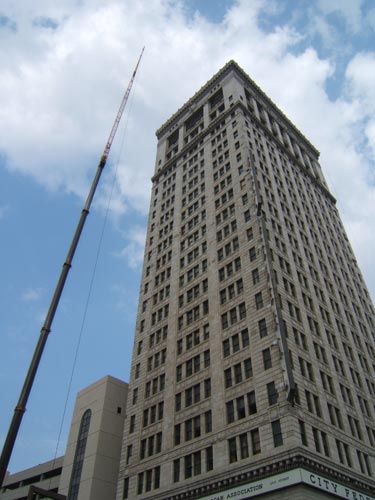 |
| Many reregard the renovation of the City Federal Lofts lobby as the strongest symbol of Downtown Birmingham’s revitalization. |
It’s not that real estate developers didn’t seriously consider renovating old Downtown buildings before.
But unleashed demand has meant scores of people willing to pay well over $150 per square foot for upscale condos barely off the drawing board. This makes it less risky for developers tackling even the biggest, most challenging loft conversions to get bank financing, and turn a nice profit.
Recently announced loft condominium conversions in Birmingham’s three landmarks – the crumbling City Federal, the former Cabana Hotel and the old Pizitz department store buildings – testify to the strength of Birmingham’s urban living trend.
At the end of June, Atlanta developers Synergy Realty Services inked closing papers on the 27-story, 170,000-square-foot City Federal Building. Work on the icon is stirring even skeptical suburbanites to consider that Downtown Birmingham is, in fact, experiencing a rebound.
“The reception to the renovation of this building in Birmingham has been incredible,” says Randy Herron, one of Synergy Realty’s six principals. “I really see it as a big step for Downtown because it’s confirming that Downtown living works. The folks living down there already know that, but for everybody else, it’s a visible symbol that Downtown is back.”
“People have been waiting for buildings like City Federal to be revived,” says Margi Ingram, whose company is marketing at least 12 of the loft condo projects springing up like mushrooms in the Central Business District and on Southside.
“It’s energizing the City and the movement to be Downtown, the fact that this building will live again in all its glory,” she says.
Built in 1913, the City Federal was once the tallest building in Alabama and the Southeast. It’s sat vacant since the mid ‘90s. In recent years, its terra-cotta facade began crumbling so badly that the City erected a fence around it to protect pedestrians. Earlier this year, the City took owner Sam Barber to court to force repairs on the historic structure.
Herron and his partners, experienced in renovating old historic buildings, reached a deal with Barber to sell it. Though the building is sound, Herron admits City Federal poses serious challenges – repairing the terra-cotta façade, removing asbestos, replacing old windows (hundreds of them), and old mechanical systems.
“I can see why other people have found it difficult to get this deal done. But our guys have approached the major challenges, and found cost efficient ways to handle them to complete the residential build out,” he says confidently of the $20-million-plus redo.
Cabana = Leer Tower
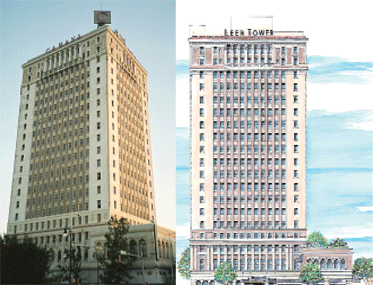 LeerCorp of Modesto, CA, is working to acquire the 20-story, 156,000-square-foot Cabana Hotel, formerly known as the Thomas Jefferson Hotel. It was completed in 1929 and has been vacant since 1983.
LeerCorp of Modesto, CA, is working to acquire the 20-story, 156,000-square-foot Cabana Hotel, formerly known as the Thomas Jefferson Hotel. It was completed in 1929 and has been vacant since 1983.
LeerCorp plans to purchase the building in August and spend more than $20 million to turn it into 55 condominium lofts. The project will also have a swimming pool and a rooftop garden terrace, and electric cars for residents to lease.
The units’ four basic layouts are named after American presidents – $225,000 for the Washington, $289,000 for the Roosevelt, $299,000 for the Lincoln and $399,000 for the Jefferson, the most popular unit because each has a private elevator. They range from 1,097 to 1,665 square feet.
Instead of one penthouse unit as originally planned, Leer Tower now has four on the top floors (the top one is already reserved). Each floor, about 6,400 square feet, is selling for $850,000, unfinished; owners will have to pay to finish them according to their own tastes.
David Leer, 27, president of LeerCorp says restoring the architectural beauty of historic buildings has become a passion for the family-owned enterprise run with his father, William, primarily because of the economic impact such projects have on local communities.
Though construction and sales will be handled in-house, LeerCorp plans to draw heavily on local sub-contractors. So about 60 cents of every dollar it spends here will flow into the Birmingham economy, Leer says. Plus, property taxes from the Leer Tower condos will provide windfall sums to strained City coffers. And, the company plans to locate an office here.
“When you renovate a historical building, it doesn’t just help your Downtown; it helps the whole economy,” he says.
Leer believes his company’s investment in the Cabana is coming at just the right time to take advantage of the new urban living wave that’s lifting property values and hopes for a revitalized Downtown Birmingham.
“I think this area – with Phoenix Lofts and the Jefferson Lofts across the street, the Pizitz building just down the block now under review, the McWane science center, the City Federal building and the new entrepreneurial center next door to us (in the long-abandoned Sears building) – we’re in a prime location for what we’re trying to do here.”
Herron and Leer hope at some point to attract commercial or retail use, especially white-table cloth restaurants, on the bottom floors of their renovated buildings. They say restaurants will bring more foot traffic to Downtown, especially at night, and add more vibrancy to City living.
<hrdata-mce-alt=”The Pizitz, Finally” class=”system-pagebreak” />
 |
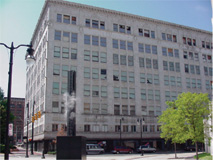 |
And the Pizitz, Finally
The last of Downtown’s iconic buildings slated for conversion is the former Pizitz, a family-run department store built in 1923. Remaking the eight-story, 225,000-square-foot landmark would be the City Center’s single largest residential redevelopment project.
Sloss Real Estate’s Ferguson says his company is looking to put as many as 100 loft condominiums and possibly some ground-floor retail stores in the white terra-cotta façade building. He didn’t give many details about Sloss’ costs, saying that the company was still working out a deal to buy it from Bayer Properties.
Jill Verdeyen Deer of Bayer Properties said her firm specializes in commercial and retail development. So the firm decided to sell the Pizitz after other new buildings Downtown lessened the demand for high-end office space. But Bayer had difficulty finding the right partner to convert the landmark for residential use.
“The building is important to us, so it was important that we found a company that was going to do a good quality product,” Deer says. “We were approached by Sloss Real Estate Group late last year, and felt confident in their ability to do this project.”
Sloss Real Estate is a partner in another significant Downtown development, Park Place. The $100 million-plus mixed-income neighborhood will eventually have 581 rental apartments and 56 townhouse condos on six blocks where the former Metropolitan Gardens housing projects once stood.
What the Future Holds
Calvert says these three major projects – in addition to planned loft conversions of large vacant structures like the Stonewall-American Life, Jefferson Home Furniture and Blach’s department store – will cut Downtown’s building vacancy rate by two-thirds.
And the biggest non-residential conversion will remove yet another major blight from the City Center landscape, he says.
The City of Birmingham recently agreed to put in half of $3 million with the Entrepreneurial Center to buy the vacant two-story, 167,000-square-foot Sears Building, near the Cabana. Run by Calvert’s wife Susan Matlock, the Center will bring under one roof its business incubator and the UAB’s high-tech business incubator, the Office for the Advancement of Developing Industries (OADI).
“All of these things are related,” Calvert says. “As we get more housing Downtown, more investments, more businesses, more retail stores – we’ll see more interest from developers. I’m just delighted to see this kind of snowball effect.”
And so is Birmingham Mayor Bernard Kincaid, who smiles broadly when talking about new developments Downtown.
“There’s a prediction by 2009 to have 2,500 residential units Downtown. We’re halfway there, and with all the development, that’s going to be an easy target to hit. So I’m just really pleased with what’s going on in out City Center, really, pleased.”
Kincaid says he’s not yet concerned about gentrification, that the hot market for loft developments will drive rents and property taxes up so high that they will price lower-income residents out of the City Center.
He’s more concerned about Downtown reaching a critical mass of people, that tipping point where the right number of people will attract retail stores such as an urban-style grocery store that Wal-Mart has developed.
Once that number is reached, Kincaid says, “the drug stores will come, the grocery stores will come, the movie theaters, and the restaurants will come. So life will come back to the City Center. We won’t have to roll up the sidewalks at night.”
Visit www.leercorp.com/leertower.htm and www.CityFederalCondos.com for more information about those developments. Also visit www.BirminghamView.com for an updated listing of loft developments.![]()


